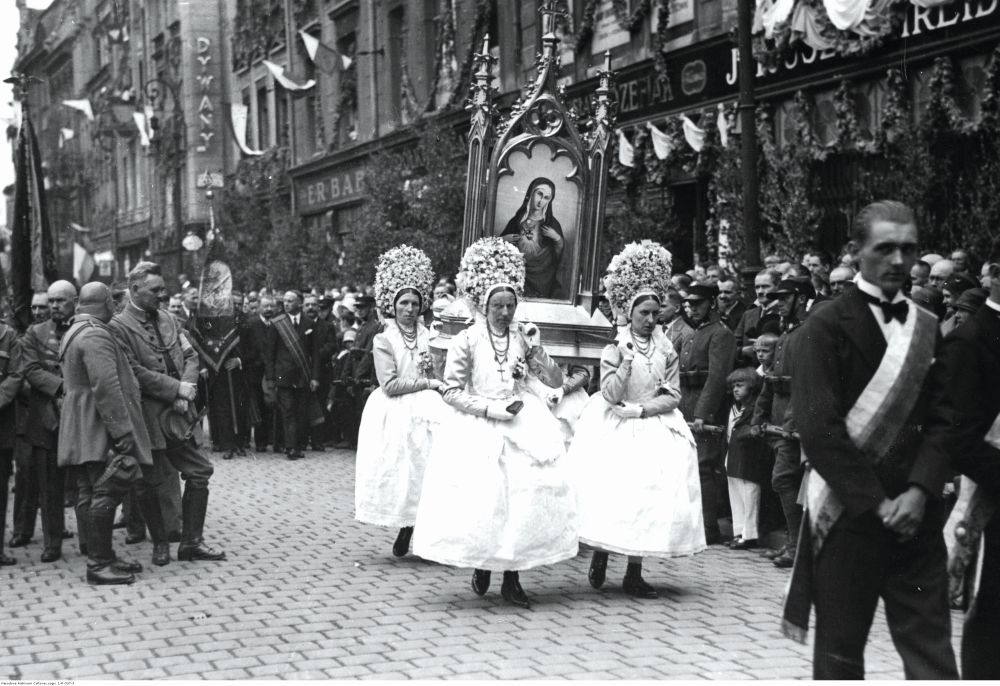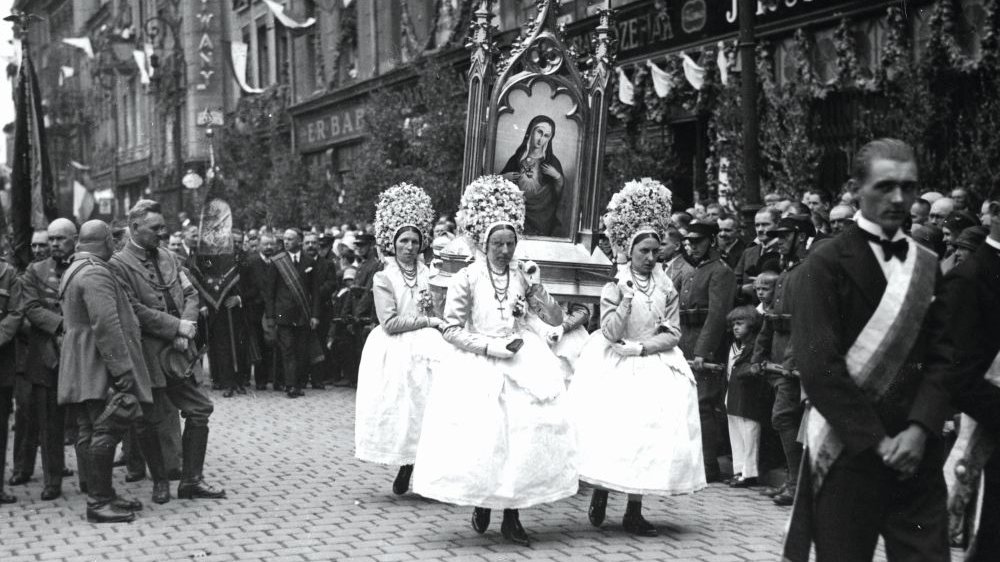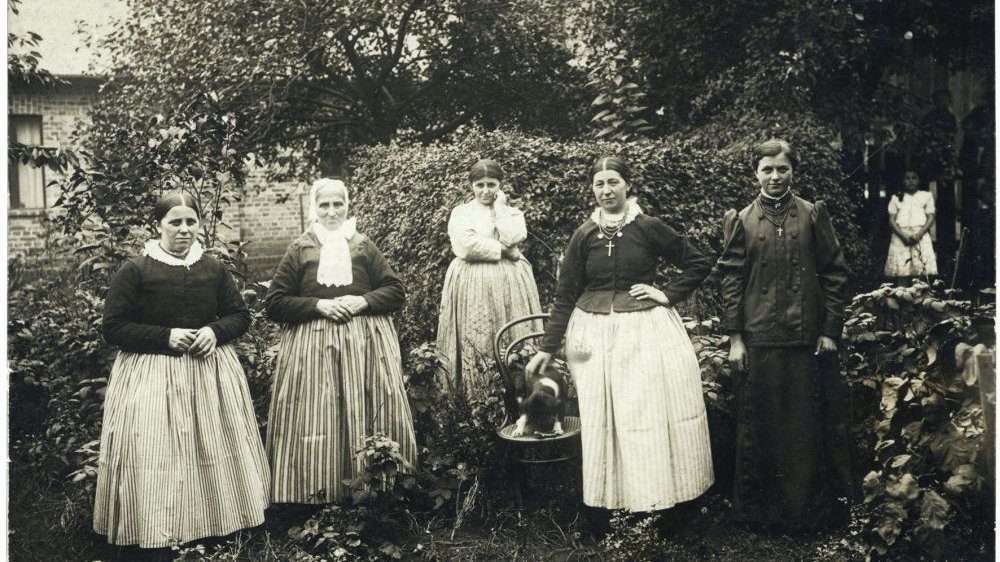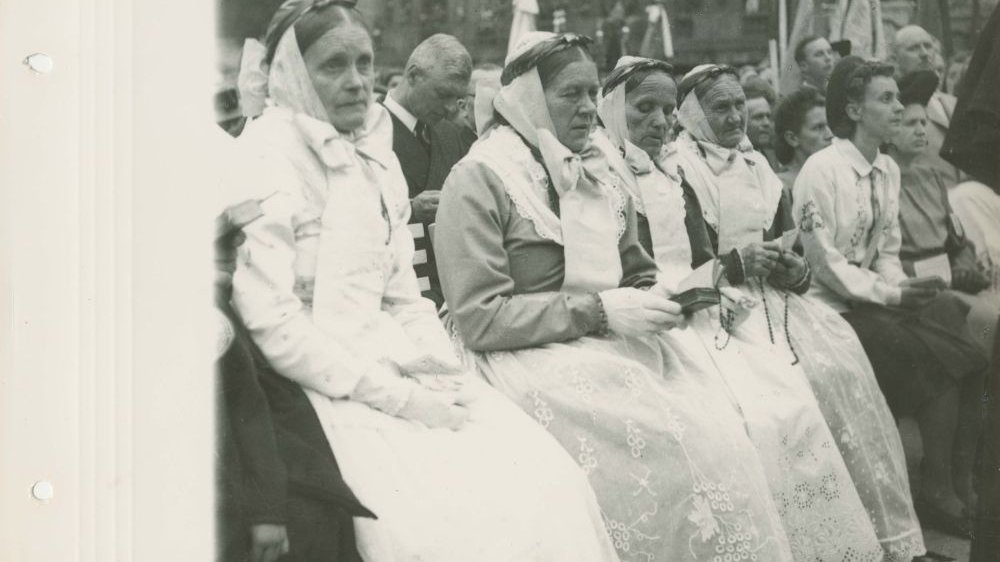What's Bamberger and what's Polish?

Some of the virtues of these newcomers from Bamberg were economy, religiosity, respect for tradition, and diligence. While all of these are certainly true, there is one other unique feature that became evident at the time of their settlement in Wielkopolska and that is often forgotten - their sheer courage...
Think of Poznań's districts of Luboń, Dębiec, Bonin, Winiary, Rataje, Wilda, Jeżyce, and Górczyn in the 18th century. Most of them were rural, their populations decimated by the Great Northern War and a plague that left big swathes of fertile land wasting away, leading to the impoverishment of the entire region. Picture also that there were not enough Polish farmers to lift Wielkopolska out of this predicament. The region suffered not as much from the lack of will as it did from a fundamental shortage of labour.
Between Bamberg and Poznań
To resolve the crisis, city councillors sought to draw settlers from outside of Poland. They picked Germany, many of whose residents had moved to Wielkopolska over the previous centuries. To bring new settlers to Poznań and its neighbouring villages, appeals were made that could easily fit the description of today's concept of "advertising". The campaign focused on the inhabitants of Bamberg in Upper Franconia. Why Bamberg, of all places? According to the researcher Max Bauer, a servant of a Poznań merchants who ended up traveling to Bamberg before 1708, saw overpopulated villages around it. Upon learning that the Poznań city council was looking to bring settlers from outside of Poland, he suggested they invite the hard-working and deeply religious people of Bamberg. The councillors took his advice and sent a message to Bamberg that encouraged its residents to settle on Polish soil. Another version of the story credits one of two bishops, Bartłomiej Tarło or Krzysztof Szembek, with the initiative to bring over the Bambergers. After the plague, which had spread death and desolation across Wielkopolska, one of the bishops set out on a journey to visit his counterpart in Bamberg. The beautiful surroundings and densely populated villages are said to have impressed the Pole so much that, upon his return to Poznań, he pointed to Bamberg as the place from which their settlers should originate.
It is difficult today to be certain which of the versions is true and what prompted the Bambergers to leave Bamberg villages and the city itself. It seems quite unexpected that the Bambergers would leave their good life and prosperous region. Max Bär believed that the answer to this question lied in the region's overpopulation. While some Bambergers did indeed enjoy prosperity, there was not enough room for everyone. Therefore, looking for opportunities to ensure a dignified life for their families, the Bambergers made the bold decision to move to Wielkopolska.
They settled in Luboń in 1719; in Dębiec, and partly in Bonin, Jeżyce and Winiary in 1730; in Rataje and Wilda between 1746 and 1747; and again in Jeżyce and Górczyn in 1750-1753. As the sole prerequisite for their acceptance, all 450 to 500 new arrivals were required to hold certificates of their Roman Catholic persuasion. This requirement was put in place in 1710 after King Augustus II issued a decree on foreign settlers in Poland.
(Un)easy beginnings
Agreements with the settlers laid down clear rules on land acquisition. The settlers would not be allowed to either sell or cede their land or take out loans without permits, although such permits were rarely denied. The settlers were free to use their land as they saw fit. All that mattered was that they managed their farms well. Importantly, the farmers would not have to fear they would be leaving their descendants with nothing despite their hard work as there was an inheritance law in place to protect them.
Not all of the settlers received the same amount of land. This too was governed by explicit rules. To make settlements easier, an "incentive package" was offered. The "package" included additional land in the form of meadows and pastures offered together with arable land to ensure that, in addition to growing rye, barley, wheat, oat and potatoes, the farmers could also breed cattle. To enable the settlers to satisfy their initial basic needs on arrival, they were presented with grain and a small sum of money. They were also offered loans on favourable terms. Considering that the farms they were given were in dire need of restoration after they had been abandoned and run down during the crisis, the settlers were exempted from all levies in the period immediately post-settlement.
The Bambergers built their new homes to a standard that evolved in time as their farms developed. In the late 18th century, the majority of residential buildings were made of wood and covered with straw, although even then some of them featured half-timbered walls. All residential buildings were fully detached, separated from farm buildings, and had adjacent gardens. By the late 19th century, most houses were made of brick and mortar, their roofs covered with tar paper.
The interiors of Bamberger homes were testimony to their builders' ability to keep their spaces neat and tidy. Although modestly furnished, the rooms were whitewashed and decorated with religious images. A stone holy water font would be placed at the front door. The ornaments were a testament to the religiosity of the Bambergers, which endeared them to their Polish neighbours.
From strangers to our own
Many articles on Bamberger settlers mention their affiliation with the Catholic Church as the decisive factor that allowed them to assimilate well into the Polish society, although there is no denying that their early contacts with Poles were fraught with distrust, if not animosity. The Bambergers stood apart from the locals with their different tongue, which must have posed a formidable language barrier. They had their distinctive customs and rituals, and dressed differently. Early on, unable to speak Polish, they would hold holy masses separately and in their own language, becoming a very isolated community. Hostility towards them, if any, may also have resulted from the preferential terms that the Bambergers were given on their arrival in Wielkopolska, presumably inspiring envy in their Polish neighbours.
However, over time, bridges were built. As more interactions occurred out of necessity, better relationships were established. After all, the Bambergers were fellow-Catholics, which was their essential redeeming quality in the eyes of the Poles. Over time, the language barrier broke down as the Bambergers picked up Polish, thanks notably to a school established in 1830 in the village of Wilda, initially designed for German children only with instruction exclusively in German. After many Polish children enrolled in the school in the 1850s and religion classes were offered in Polish, the Wilda inhabitants of German descent would themselves request to have more subjects in that language. This helped forge neighbourly ties in the years to come.
A breakthrough in the life of the residents of Poznań and the neighbouring villages came with the start of the demolition of city fortifications, after which areas around Poznań were merged with the city proper. The process, which began in 1900 with the incorporation of Jeżyce, Święty Łazarz, Górczyn and Wilda into Poznań, changed the nature and quality of life of the inhabitants of these areas, including the Bambergers. Many of them abandoned farming for careers in trade. Some bought urban tenement houses, opened workshops or started a business. By then, they were completely assimilated into Polish society, which they demonstrated, among others, by fighting on the side of Poles in the Wielkopolska Uprising and later in World War II.
Thanks to their determination to make Wielkopolska their true home, the Bambergers became a colourful and interesting part of the local community, sharing with it all the things that are typically Bamberger while absorbing what is quintessentially Polish. I am often told that we already know everything there is to know about them and that nothing new can be either said or written. My personal opinion is that their seemingly familiar history can be rediscovered anew time and time again and that many new questions about who the Bambergers were can still be posed.
Justyna Żarczyńska
translation: Krzysztof Kotkowski
See more

From One Celebration to Another

Christmas Markets and Fairs with Attractions

Truly Festive Vibes



